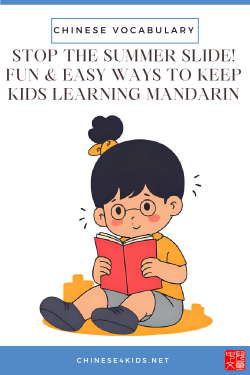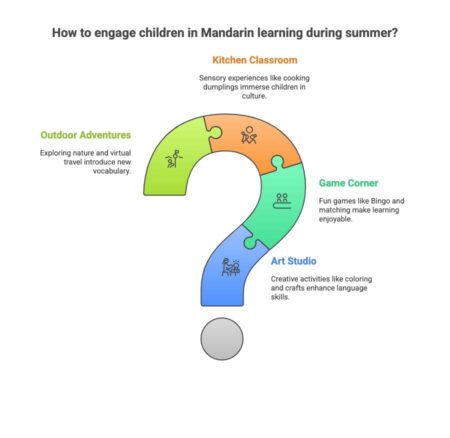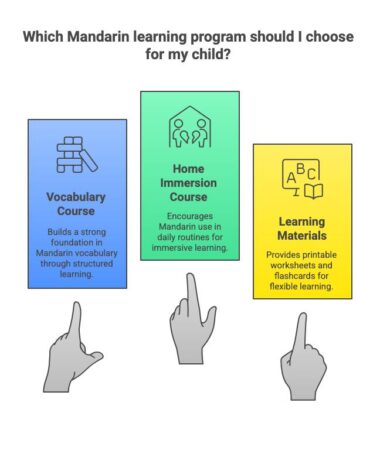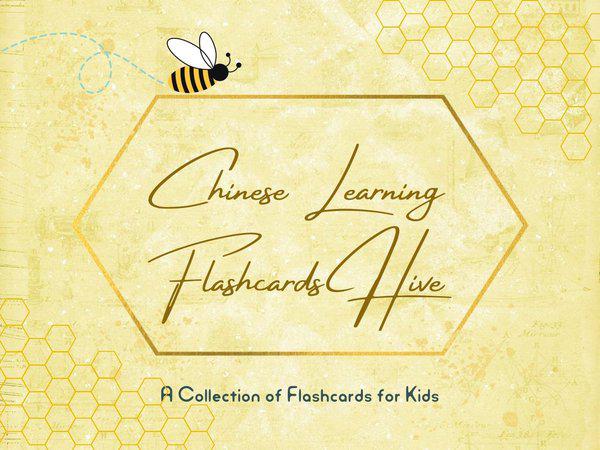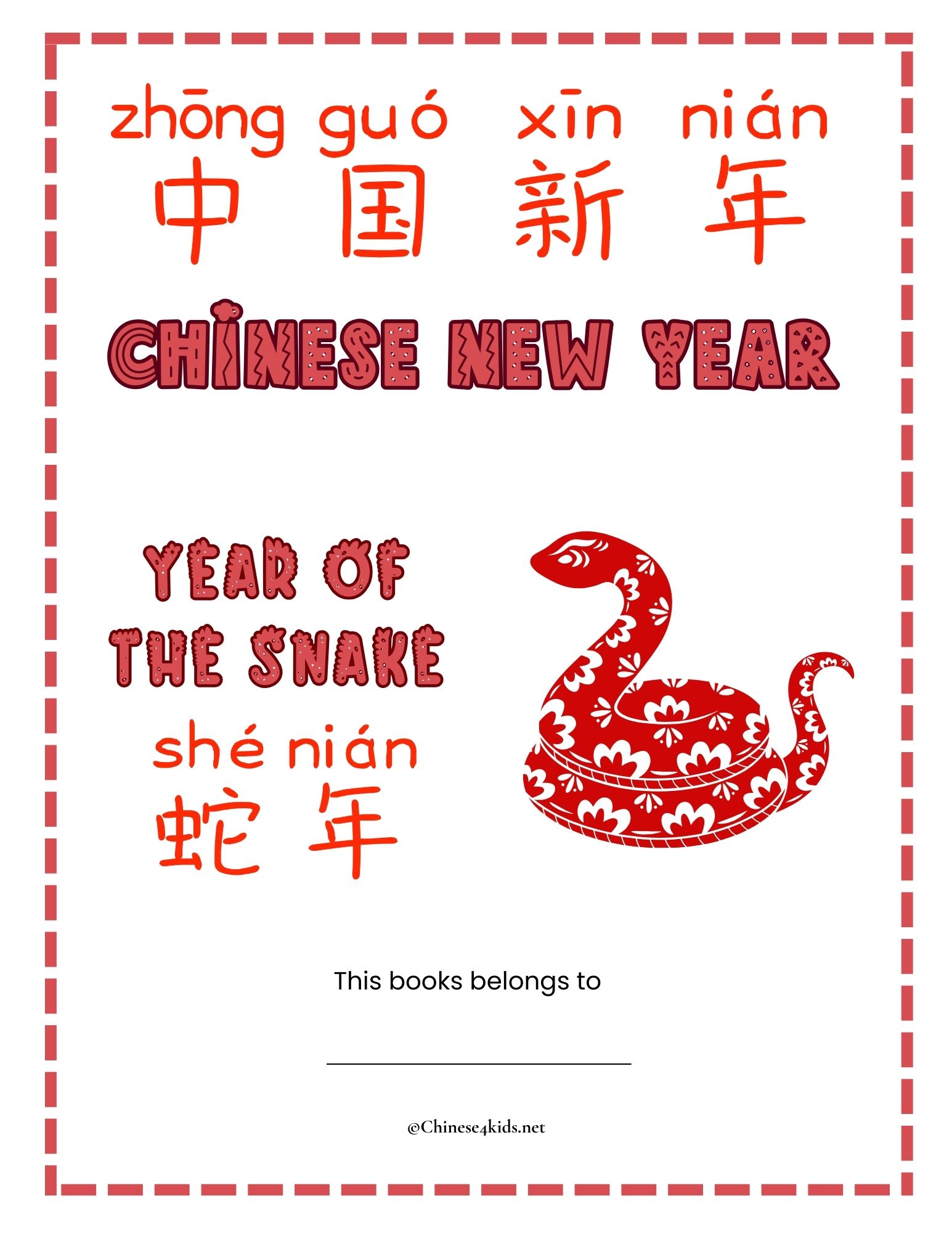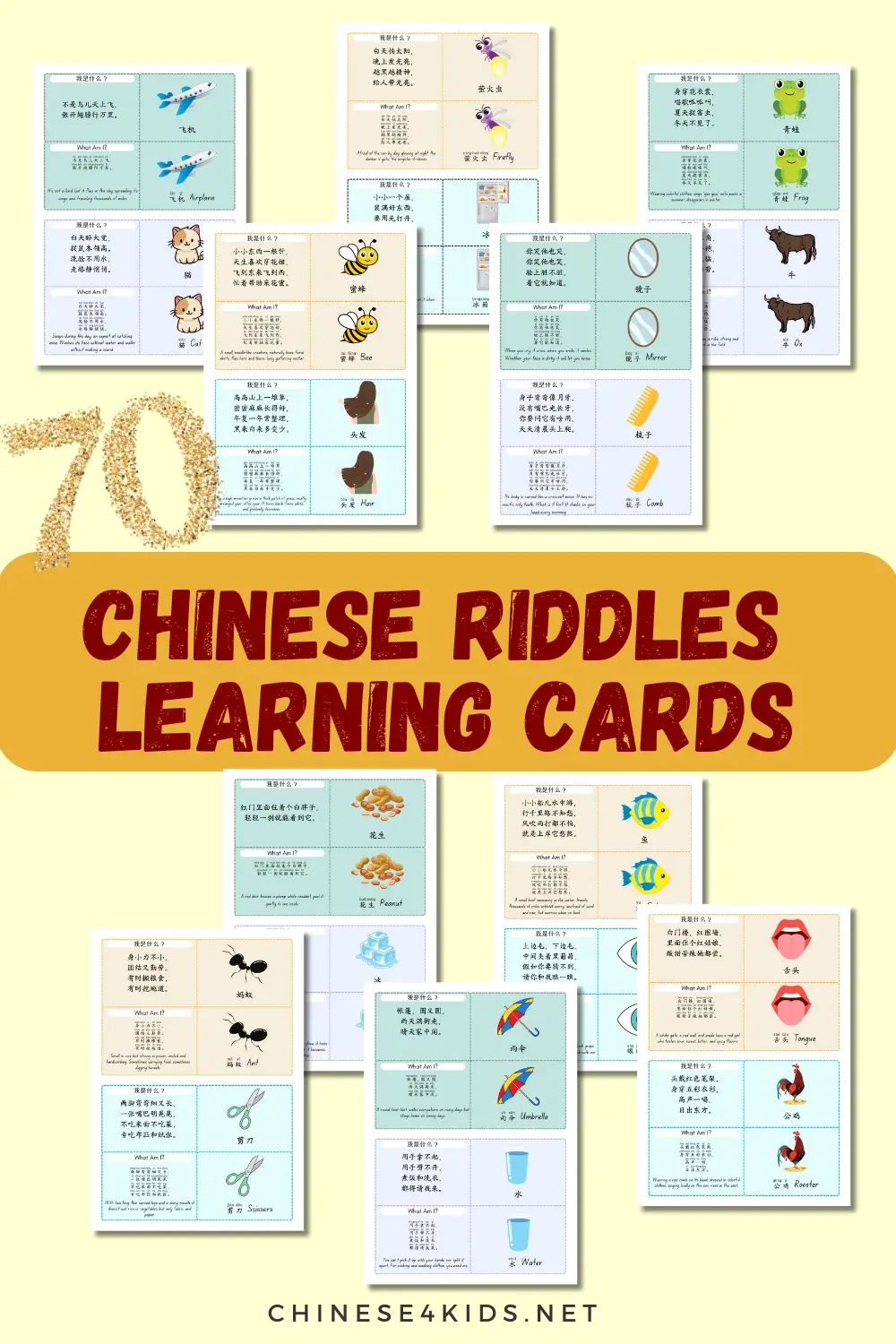
Home » Chinese learning activities for kids » Keep Mandarin Fun This Summer! Your Practical Guide to No-Stress Learning
Keep Mandarin Fun This Summer! Your Practical Guide to No-Stress Learning

School’s out! Summer is a time for fun, relaxation, and a break from schoolwork. But for kids learning Mandarin, a long break can mean they forget a lot of what they’ve learned. This is often called the “summer slide”.
This phenomenon refers to the loss of academic skills over the summer holidays. Research shows that students can lose, on average, about a month’s worth of learning, with some studies indicating that children in grades 3 to 5 lose approximately 20% of their school-year gains in reading and 27% in math.3 This effect is particularly acute for foreign language acquisition, a skill that relies heavily on consistent exposure and practice. For children learning Mandarin, the summer slide can mean a significant regression in vocabulary, fluency, and confidence. When school starts again, they might feel frustrated trying to remember words and phrases that used to be easy.
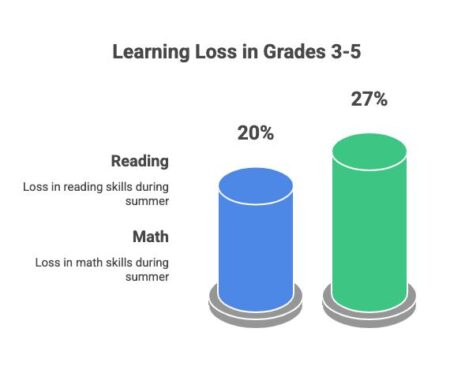
But don’t worry! You don’t have to turn your summer into a boring boot camp. The goal isn’t to copy school with endless worksheets, which can just lead to arguments . Instead, you can make summer a fun and powerful time for language learning. The secret is to weave Mandarin into your everyday life in playful, easy ways.
This guide is packed with practical tips that don’t need a lot of supervision. You don’t even need to speak Mandarin yourself! Your job isn’t to be a teacher, but to create a fun environment where your child can naturally keep learning. Let’s turn this summer into a Mandarin adventure!
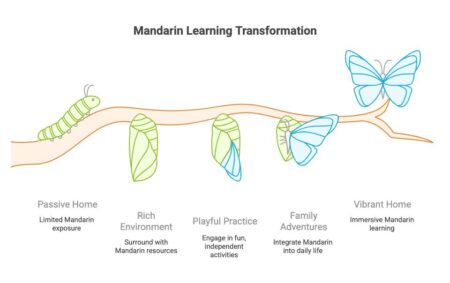
The “Set It and Forget It” Summer: Make Your Home a Chinese Funhouse (打造沉浸式中文环境 )
The easiest way to keep Mandarin alive is to make it a part of your child’s surroundings. These simple tricks help your child absorb the language without even trying.
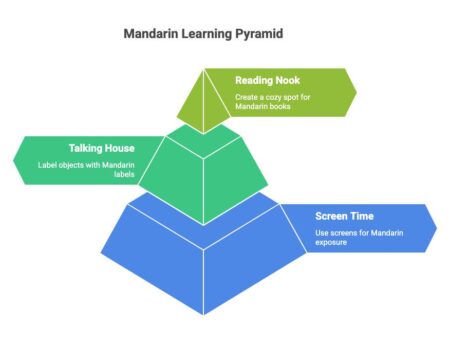
Turn Screen Time into Learning Time (数字保姆)
Let’s be real—kids love their screen time. Instead of fighting it, let’s use it for good! A few small changes can turn screens into a free language tutor.
Switch the Language: Change the language settings on your child’s tablet, phone, or favorite apps to Mandarin. This is a super simple way to expose them to useful, everyday words.
Create a Cartoon Playlist:
On YouTube, make a playlist of cartoons in Mandarin. Start with shows they already love, like Peppa Pig (小猪佩奇) or PJ Masks (睡衣小英雄). The familiar stories make it easier to understand the new language. You can also add popular Chinese shows like Boonie Cubs (熊熊乐园) or channels made for learners, like Miaomiao Kidz and Little Fox Chinese.
Mandarin Movie Night:
When you watch a family movie on Netflix or DVD, switch the audio to Mandarin. You can keep the English subtitles on to help with understanding.
Listen to Chinese Music and Stories: Use Spotify or other music apps to play Chinese children’s songs (儿歌) and stories in the background during playtime or in the car. This helps your child get used to the sounds and tones of Mandarin without any effort.
Make Your House a “Talking House” (会说话的房子)
Turn your home into a living dictionary! When kids see Chinese characters next to the real objects, it helps them remember the words naturally.
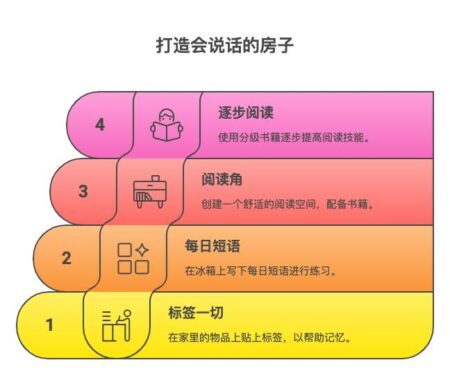
Label Everything:
This is a classic for a reason! Use printable labels to stick on things around the house. Start with one room, like the bedroom (卧室). Label the door (门), table (桌子), and chair (椅子). Seeing these words every day makes them stick.
Phrase of the Day:
Use a small whiteboard on the fridge to write a new, simple phrase each day. You can find printable lists of phrases like “I’m hungry” (我饿了) or “Thank you” (谢谢) to make it a quick, 30-second task.
Build a Cozy Reading Nook (阅读角):
Make a comfy spot with pillows and a small bookshelf filled with Mandarin picture books. For beginners, it’s great to have books that build confidence. The My First Chinese Reading Made Easy series is perfect for this. It uses leveled books that start super simple and slowly add new words, so kids never feel overwhelmed.
Level aa books have just 1–3 words per page and lots of repetition, perfect for the very first step.
Level A books introduce simple, complete sentences about familiar topics.
As they grow, they can move up to Levels B and C, which introduce more words and varied sentences. This step-by-step approach makes reading feel like a fun achievement.
Playful Practice
Fun and Games (That Sneak in Learning) (玩中学,学中玩)
These activities feel like pure fun, but they’re secretly packed with language practice. They are great for keeping kids busy on their own.
The Little Artist’s Studio (小艺术家工作室 )
Art is a quiet and creative way to practice Mandarin.
Coloring and Tracing:
Print out coloring pages of Chinese characters for words like “love” (爱) or “friendship” (友谊) . You can also find “color-by-character” sheets where kids have to recognize the word for red (红) to color the picture correctly.Tracing worksheets help them learn how to write the characters.
Easy DIY Crafts:
Prepare a few craft kits in bags so they’re ready to go.
- Paper Plate Dragon (纸盘龙): With a paper plate, colored paper, and googly eyes, kids can make a festive dragon, a lucky symbol in Chinese culture.
- Red Paper Lanterns (灯笼): This is a classic craft that just needs red paper, scissors, and a stapler. They make beautiful decorations!.
- Chinese Zodiac Wheel (十二生肖转盘): Find a printable zodiac wheel template. Kids can color the 12 animals (like the tiger 虎 or rabbit 兔), learn their names, and then spin the wheel to find their own sign .
The Game Master’s Corner (游戏大师的角落)
Games make learning feel like an adventure, not a chore.
Mandarin Bingo (中文宾果):
Use printable Bingo cards with Chinese characters or pictures. Call out the word in Mandarin and have kids find it on their card. This is great for listening skills.
Matching Game (配对游戏):
Make your own memory game with cards. Put a Chinese character on one card and a picture on another. Kids lay them face down and try to find the pairs. You can use online flashcard makers to create your own sets.
Printable Fun with Themed Vocabulary:
You can make all these games even better by using themed words. Chinese4kids.net offers themed vocabulary packs on topics like seasons, animals, clothing, and food.You can also find lots of ready-to-go worksheets and activity sheets in their
worksheets membership, which is perfect for busy parents who want fun, engaging materials without the prep work.
Weaving Mandarin into Your Summer Adventures (生活中的中文)
The best learning happens during everyday activities. Turn your summer outings into easy language lessons.
The Kitchen Classroom (美食课堂)
The kitchen is a fantastic place to learn. It uses all the senses!
Grocery Store Safari (超市寻宝):
Make your grocery trip a game. Ask your child, “Can you find three red fruits?” (找到三种红色的水果). This makes them actively search and use their vocabulary.Let’s Make Dumplings! (我们来包饺子吧!):
Making dumplings (饺子) is a perfect family activity. It’s fun, hands-on, and a great way to learn about Chinese culture . Kids can help mix the filling and fold the wrappers. They’ll learn words for ingredients like pork (猪肉) and actions like fold (折) while making a delicious meal and a happy memory .
The World as a Classroom (世界大课堂)
Get outside! New places mean new words and new adventures.
Nature “I Spy” (我看到):
On a walk, play “I Spy” in Mandarin. You can say, “我看到一个红色的花” ( I see a red flower). It’s a simple way to practice sentences and notice the world around you.
Take a Virtual Vacation (云游中国): Can’t fly to China? No problem! Take a virtual trip. Use Google Arts & Culture to explore the Great Wall (长城) . You can also watch short, animated videos about Chinese culture, like Chinese cuisine .
Want to Go Deeper with Chinese4kids.net?
If you’re looking for more structured ways to boost your child’s Mandarin, Chinese4kids.net has some great programs designed to make learning systematic and fun.
Build Vocabulary from the Ground Up:
For kids who are ready to move beyond just picking up words, the Chinese Vocabulary Made Easy course is a great next step. This online course guides children through learning characters, then combining them into words, and finally using them in sentences.It’s a structured way to build a strong foundation.
Speak More Chinese at Home:
For parents who want to use more Mandarin in daily routines, the Speak Chinese with Kids course is a fantastic resource. It gives you hundreds of common sentences for everyday situations, helping you create a more immersive home environment even if you’re a beginner yourself.
A Library of Learning Materials:
Beyond courses, the site offers a worksheets membership full of engaging activity sheets and a flashcards hive with a huge library of vocabulary cards. These resources are perfect for parents and teachers who want quality materials ready to print and use.
All in all: Keep it Fun, Keep it Going!
The best way to beat the “summer slide” is to make Mandarin a natural part of your summer fun. Don’t aim for perfection. Just aim for consistent, light, and happy exposure. Every little bit counts, whether it’s labeling a banana, singing a song, or playing a game.
By making language learning a joyful part of your family’s summer, you give your child more than just vocabulary. You help them build confidence, curiosity, and a positive connection to a new culture. And that’s a gift that will last a lifetime.
If you like this post, share it
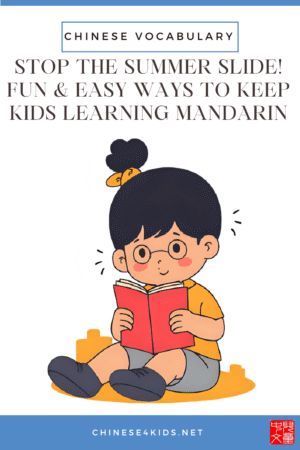
You May Also Be Interested:
- Chinese4kids Membership – a portal for busy Chinese teachers and parents
- Chinese learning flashcards Hive – a flashcards library that with regular additions of new quality Chinese learning flashcards
- Chinese learning worksheets collection – Also a part of Chinese4kids membership, this collection is for teachers and parents who want to have access to engaging worksheets and activity sheets created for kids learning Mandarin Chinese as an additional language
- Speak Chinese with Kids Course
- Chinese Vocabulary Made Easy Course
Recent Posts
Join Our Membership
Enroll to A Course
Buy An eBOOK
Our Posts
